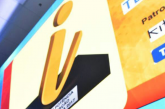E-books may be convenient and cheap, but they aren’t displacing paper just yet, at least in the hearts and minds of college kids. That’s what Naomi Baron, linguistics professor at American University, found out as part of the research she conducted for her new book, “Words Onscreen: The Fate of Reading in a Digital World.”
E-books may be convenient and cheap, but they aren’t displacing paper just yet, at least in the hearts and minds of college kids. That’s what Naomi Baron, linguistics professor at American University, found out as part of the research she conducted for her new book, “Words Onscreen: The Fate of Reading in a Digital World.”
She and her fellow researchers surveyed over 300 university students from Japan, Germany, Slovakia and the U.S., and found that 92 percent preferred to do serious reading in paper books — rejecting e-readers, laptops, phones and tablets.
“There really is a physical, tactile, kinesthetic component to reading,” Baron said in an interview with New Republic. “In the Slovakian data, when I asked what do you like most about reading in hard copy, one out of ten talked about the smell of books.”
For light reading, such as news articles or anything with a large visual component, a screen might be the better choice — and publishers are exploring that with high-tech, interactive titles. But when it’s time to settle down with that new bestseller or power through a book for class, paper appears to be safe for the moment.
Baron’s book, “Words Onscreen,” explores the effect of technology on reading and learning habits worldwide.
Interview with Naomi Baron, author of “Words Onscreen: The Fate of Reading in a Digital World.”:
Alice Robb: Why are young people—who are accustomed to doing most things on screens—resistant to e-books?
Naomi Baron: There are two big issues. The first was they say they get distracted, pulled away to other things. The second had to do with eye strain and headaches and physical discomfort.
When I asked what they don’t like about reading on a screen—they like to know how far they’ve gone in the book. You can read at the bottom of the screen what percent you’ve finished, but it’s a totally different feel to know you’ve read an inch worth and you have another inch and a half to go. Or students will tell you about their visual memory of where something was on the page; that makes no sense on a screen. One student said, “I keep forgetting who the author is. In a print book all I have to do is flip back and I see it.” There are all kinds of reasons students will give—“I have a sense of accomplishment when I finish a book and I want to see it on the shelf.” They care about the smell of a book. In the Slovakian data, when I asked what do you like most about reading in hard copy, one out of ten talked about the smell of books. There really is a physical, tactile, kinesthetic component to reading.
AR: So students feel like they’re learning more when they actually read books in print, but do we know whether they actually retain more?
NB: Generally speaking, if you give standardized tests on comprehension of passages, the results are about the same on a screen or on hard copy. There are a number of studies that have been done in different countries—in Germany, Austria, Israel, United States, Norway.
But you have to ask: What do you want to measure? Do you want to measure comprehension? That’s a fairly plain, middle-school way of talking about what it means to read. Did you get so involved in that book that you didn’t notice what was going on around you? That you insisted on staying up until three o’clock in the morning? Did you cry?
My research shows people are more likely to re-read if they have a book in hard copy. You might see the title on your shelf and think, “I hadn’t thought about that scene in a long time.” There are certain connections we make that go beyond decoding words.
AR: You argue in the book that e-books make reading a more social, less personal experience.
NB: If you’re annotating on a Kindle, on a Kobo, you see—you know how many people thought that word was really important, or maybe everybody else liked this passage. If we sat and thought about it, what we think the author has to say. … Rather, we’re just trying to present ourselves or fit in.
AR: Why do students buy e-books if they don’t like them?
NB: One argument that students give in favor of electronic media is saving the environment. But this is a hard thing to measure well. If you read 400 books in the life-span of your kindle, was that energy-efficient? Probably. But then there’s the question of energy and recycling. Where is it that these devices get recycled? Who does the recycling? What kind of protective gear do they have? And in terms of all those trees we use for paper—we have creative ways of using woodchips or whatever to make paper.
In the United States, e-books are less expensive. Students will say, “I’d like to have the print version, but the electronic version is so much less expensive.” But if you buy a book used, the publisher and the author are not getting any money but they are getting another reader and they’re not cutting another tree. And the cost is less. And if it goes to a third generation the cost is really less.
My major concern, as a person in higher education, is that we’re not listening. We’re assuming we’re being helpful by lowering price, by making it more convenient, by helping the environment, but we don’t bother asking our students what they think.
Source: NBC NEWS
Interview by Alice Robb, New Republic.





